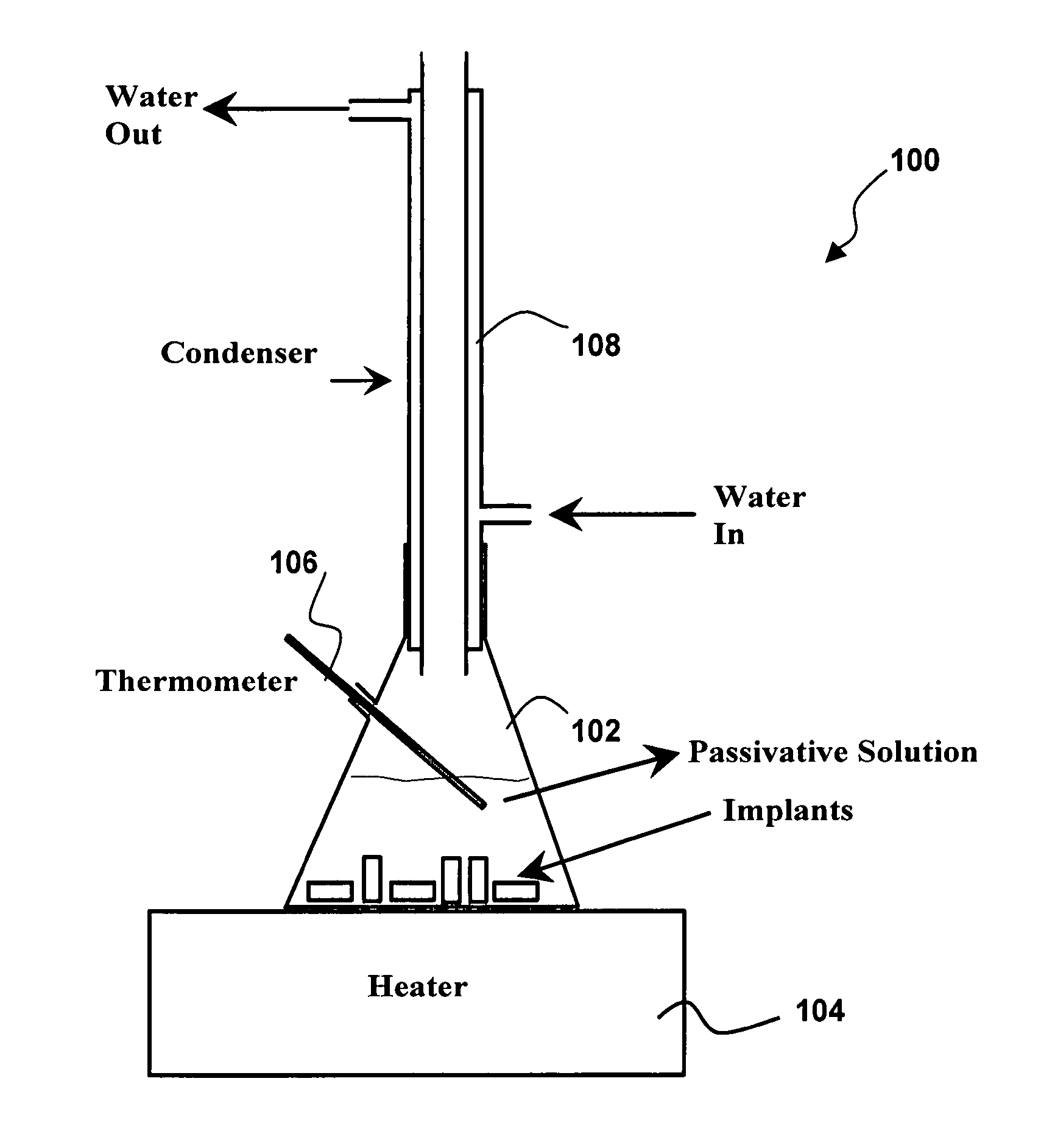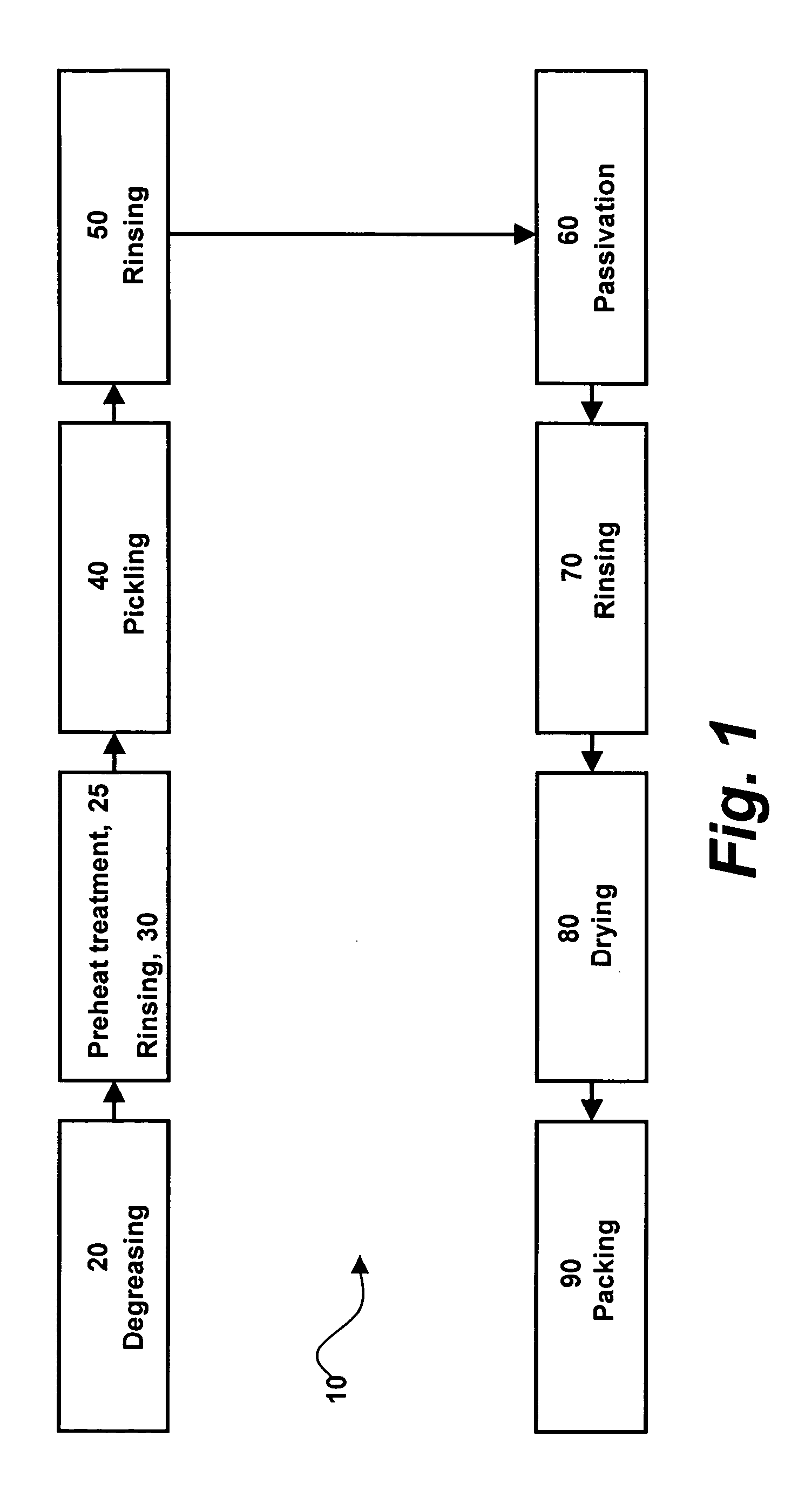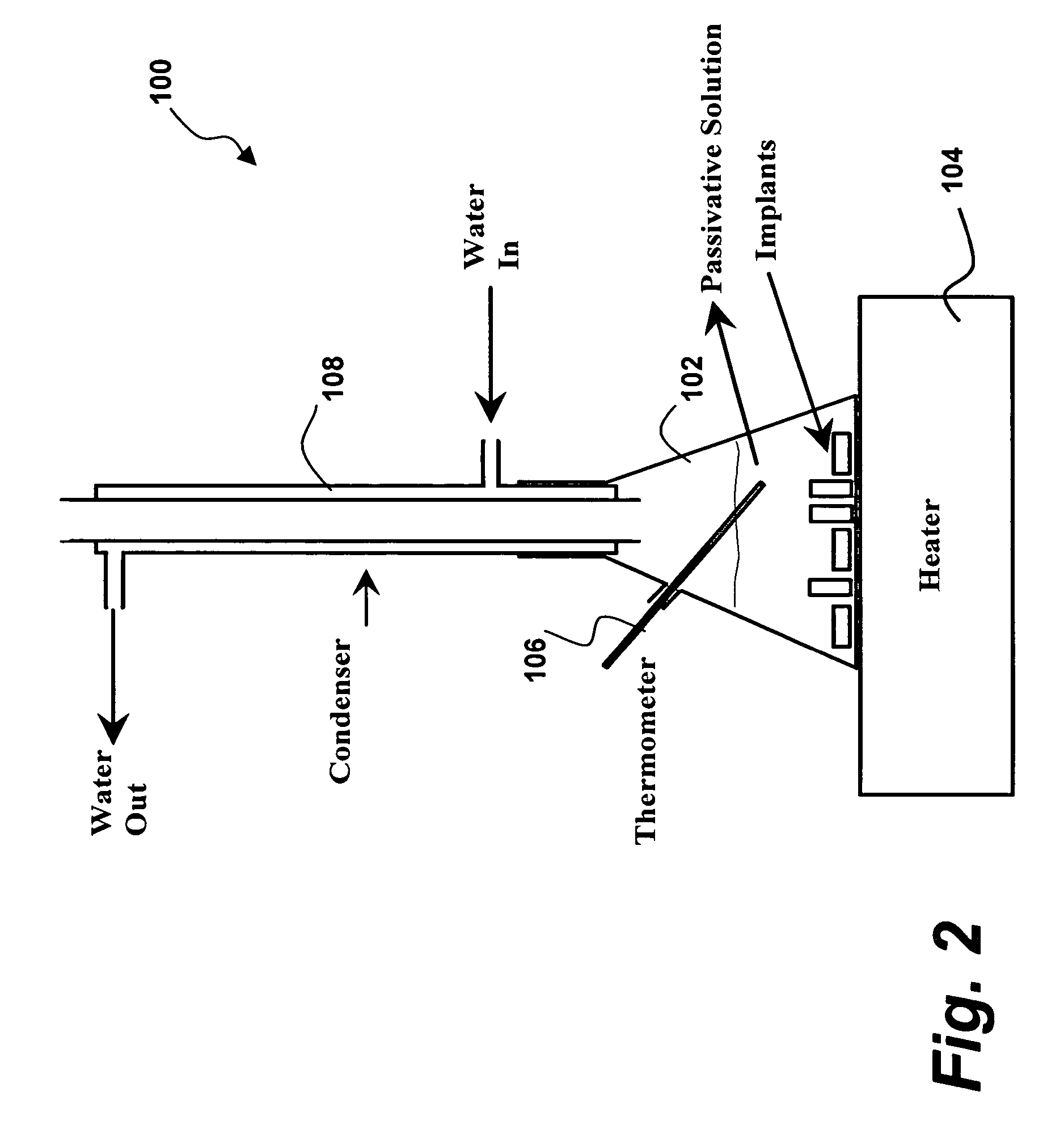Amorphous oxide surface film for metallic implantable devices and method for production thereof
a technology of amorphous oxide and implantable devices, which is applied in the direction of prosthesis, blood vessel, food packaging, etc., can solve the problems of poor blood compatibility and/or cellular interaction of the stent, increased so as to reduce thrombogenicity and ensuing restenosis, stable open-circuit potential, and inhibit the release of positively
- Summary
- Abstract
- Description
- Claims
- Application Information
AI Technical Summary
Benefits of technology
Problems solved by technology
Method used
Image
Examples
Embodiment Construction
[0054] In describing the preferred and selected alternate embodiments of the present invention, as illustrated in FIGS. 1-12, specific terminology is employed for the sake of clarity. The invention, however, is not intended to be limited to the specific terminology so selected, and it is to be understood that each specific element includes all technical equivalents that operate in a similar manner to accomplish similar functions.
[0055] Referring specifically now to FIGS. 1-2, the present invention in a preferred embodiment is an amorphous oxide surface film 5 for metallic implantable devices, and method 10 for production thereof, wherein method 10 comprises the steps of degreasing 20, pre-heat treatment 25, rinsing 30, pickling 40, rinsing 50, passivation 60, rinsing 70, drying 80, and packing 90. As more fully described below, passivation step 60 of method 10 is preferably implemented via apparatus 100, wherein apparatus 100 preferably comprises flask 102, heater 104, thermometer ...
PUM
| Property | Measurement | Unit |
|---|---|---|
| boiling temperature | aaaaa | aaaaa |
| concentration | aaaaa | aaaaa |
| concentration | aaaaa | aaaaa |
Abstract
Description
Claims
Application Information
 Login to View More
Login to View More - R&D
- Intellectual Property
- Life Sciences
- Materials
- Tech Scout
- Unparalleled Data Quality
- Higher Quality Content
- 60% Fewer Hallucinations
Browse by: Latest US Patents, China's latest patents, Technical Efficacy Thesaurus, Application Domain, Technology Topic, Popular Technical Reports.
© 2025 PatSnap. All rights reserved.Legal|Privacy policy|Modern Slavery Act Transparency Statement|Sitemap|About US| Contact US: help@patsnap.com



